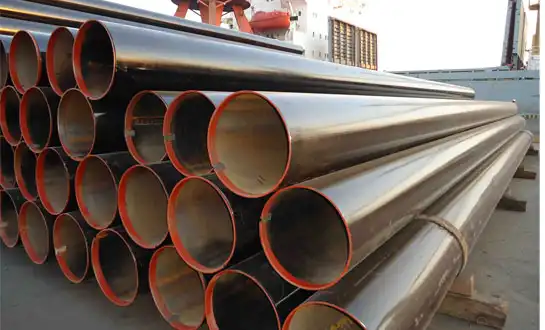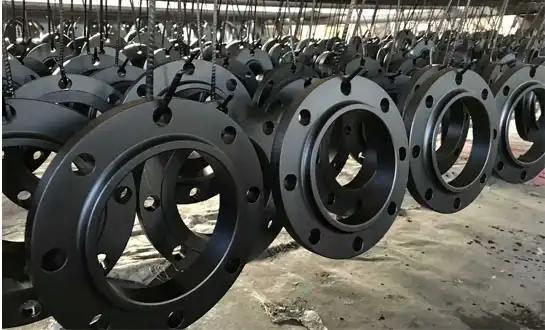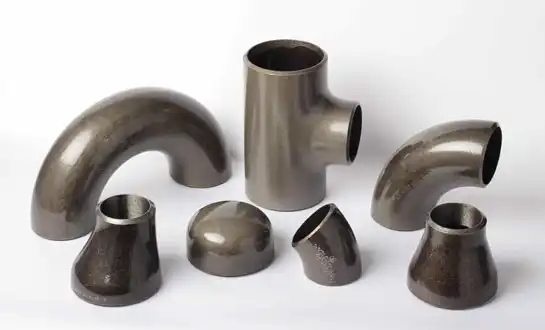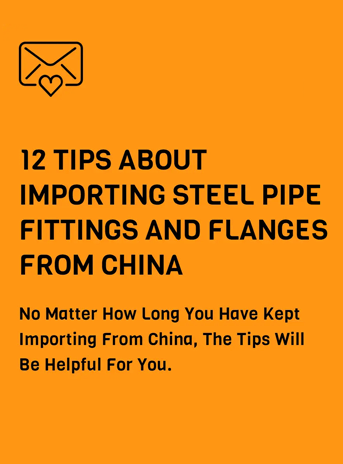How to Select Steel Pipe Fittings for Oil & Gas Projects Safely?
Selecting appropriate steel pipe fittings for oil and gas projects demands meticulous attention to safety standards, material specifications, and operational requirements. The oil and gas sector works under very harsh circumstances, with high pressures, corrosive materials, and changing temperatures that put even the strongest infrastructure to the test. Steel pipe fittings are important parts of these complicated pipeline systems because they link different parts of the system. They directly impact how safe, stable, and well the system works over time. Knowing the selection criteria, such as material grades, pressure ratings, welding compatibility, and environmental factors, makes sure that your pipeline infrastructure achieves both operational excellence and regulatory compliance requirements for its entire service life.
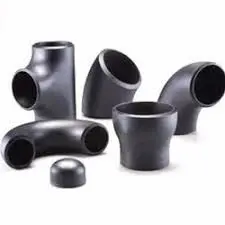
Understanding Material Specifications and Grade Requirements
Evaluating Carbon Steel and Alloy Steel Options for Harsh Environments
Material selection represents the foundational decision when specifying steel pipe fittings for oil and gas applications. Carbon steel fittings offer excellent mechanical properties and cost-effectiveness for standard applications, with grades like ASTM A234 WPB providing reliable performance in moderate service conditions. However, oil and gas projects frequently encounter aggressive media containing hydrogen sulfide, carbon dioxide, and chlorides that accelerate corrosion mechanisms. In such environments, selecting steel pipe fittings manufactured from low-alloy steels or chrome-moly grades becomes essential. There are alloying parts in these high-tech materials that make them less likely to break under sulfur stress, hydrogen stress, and general rust. Engineers should reference industry standards such as NACE MR0175/ISO 15156 when specifying materials for sour service applications. Also, impact testing standards at the lowest design temperatures make sure that steel pipe fittings are robust even when the temperature changes, which prevents brittle fractures from happening.
Pressure Rating Classification and Design Factor Considerations
Pressure ratings constitute a critical specification parameter that directly correlates with safety margins and operational reliability in oil and gas pipeline systems. Steel pipe fittings must be selected with pressure classes that exceed maximum anticipated operating pressures by appropriate safety factors, accounting for pressure surges and potential overpressure scenarios. The ASME B16.9 standard establishes dimensional and pressure-temperature ratings for factory-made wrought steel butt-welding fittings, providing a systematic framework for selection. Design factors incorporate considerations for corrosion allowances, erosion in high-velocity applications, and mechanical stress concentrations at fitting geometries. Oil and gas projects operating in offshore environments or remote locations require additional conservatism in pressure rating selection due to limited accessibility for maintenance and inspection.
Chemical Composition Analysis and Traceability Requirements
Chemical composition verification serves as a fundamental quality assurance measure ensuring that steel pipe fittings meet specified material standards and performance expectations. Elements such as carbon, manganese, silicon, sulfur, and phosphorus must fall within specified ranges to achieve desired mechanical properties and weldability characteristics. Third-party inspection agencies frequently verify chemical composition through optical emission spectroscopy, comparing results against mill test reports and purchase order specifications. Documentation requirements extend throughout the supply chain, with each steel pipe fitting accompanied by material test reports, heat numbers, and manufacturing records that establish complete genealogy for future reference during inspections or failure investigations.
Design Considerations for Connection Integrity and System Performance
Butt-Weld Connection Selection and Installation Quality
Connection methodology selection significantly influences installation efficiency and joint integrity in oil and gas pipeline systems. Butt-welding is the best way to connect steel pipe fittings in high-pressure situations because it makes them stronger and keeps the interior bore smooth, which keeps the pressure from dropping. Butt-weld fittings may provide full-penetration welds that make joints that are almost as strong as the parent material. For the most important business tools, this is important. Beveled ends on butt-weld steel pipe fittings facilitate complete fusion welding and enable radiographic examination to verify weld quality throughout the entire joint cross-section.
Dimensional Tolerances and Fit-Up Requirements
Dimensional accuracy of steel pipe fittings directly impacts installation quality and welding productivity in oil and gas pipeline construction. Manufacturing tolerances specified in ASME B16.9 establish acceptable variations in outside diameter, wall thickness, and center-to-end dimensions for various fitting configurations. Out-of-roundness limits ensure that steel pipe fittings maintain consistent wall thickness distribution and enable uniform heat input during circumferential welding operations. Quality control programs at manufacturing facilities employ dimensional inspection protocols including ultrasonic thickness gauging and optical measurement systems to verify conformance.
Stress Analysis and Flexibility Considerations
Pipeline flexibility analysis ensures that thermal expansion and operational loads do not generate excessive stresses at steel pipe fittings or compromise system integrity. Steel pipe fittings at direction changes and branch connections experience concentrated stresses from internal pressure, external loads, and restrained thermal growth. Computer-aided stress analysis programs calculate stress intensification factors at elbows, tees, and reducers based on geometric parameters and loading conditions, guiding support placement and expansion loop design to maintain stresses within acceptable ranges.
Quality Assurance, Testing, and Compliance Verification
Non-Destructive Examination and Testing Protocols
Non-destructive examination provides essential quality verification for steel pipe fittings without compromising their structural integrity. Radiographic testing is still the best way to check for volume, as it may find interior problems like porosity and incomplete fusion in butt-welded joints. Ultrasonic testing provides an alternative technique particularly effective for thick-walled steel pipe fittings. Hydrostatic testing serves as final verification that steel pipe fittings can safely contain design pressures, with test pressures typically exceeding maximum allowable operating pressure by factors ranging from 1.25 to 1.5.
Certification Documentation and Regulatory Compliance
Comprehensive documentation establishes material traceability and demonstrates regulatory compliance for steel pipe fittings installed in oil and gas facilities. Material test reports from the manufacturer include details of the chemical composition, mechanical properties, and dimensions of the materials. GOST-R certification, SGS verification, and ISO 9001:2015 registration demonstrate systematic quality management throughout the supply chain, ensuring that steel pipe fittings bear appropriate markings identifying material grade, pressure class, and manufacturer identification.
Conclusion
Steel pipe fittings for oil and gas projects should have material specs, pressure rates, and ways to make sure quality written out very carefully before they are bought. Choosing the right materials, keeping strict control over dimensions, and doing extensive testing all work together to provide a durable pipeline system that works safely for the whole design life under tough situations.
FAQ
1. What material grade is most suitable for sour service applications?
Low-alloy steel grades conforming to NACE MR0175/ISO 15156 requirements provide optimal performance for sour service. Steel pipe fittings manufactured from ASTM A234 WP11 or WP22 chrome-moly materials offer superior resistance to sulfide stress cracking compared to carbon steel alternatives.
2. How do I determine the correct pressure rating?
Pressure ratings for steel pipe fittings should be selected based on maximum anticipated operating pressure multiplied by appropriate design factors. ASME B16.9 provides pressure-temperature ratings for various material grades ensuring adequate safety margins.
3. What inspection methods are required for critical applications?
Critical applications require volumetric examination of all butt-welded joints using radiographic or ultrasonic testing. Steel pipe fittings should undergo positive material identification, dimensional verification, and hydrostatic pressure testing to validate system integrity.
4. Can carbon steel fittings be used in corrosive environments?
Carbon steel pipe fittings provide adequate performance in mildly corrosive applications when proper corrosion allowances are specified. Environments containing hydrogen sulfide or chlorides typically require corrosion-resistant alloy materials.
HEBEI RAYOUNG PIPELINE: Your Trusted Steel Pipe Fittings Manufacturers and Suppliers
At HEBEI RAYOUNG PIPELINE TECHNOLOGY CO., LTD., we supply premium steel pipe fittings including buttweld elbows, reducers, tees, and flanges that meet demanding specifications for critical energy sector applications. Our commitment to ISO 9001:2015 quality management, combined with GOST-R and SGS certifications, ensures consistent performance backed by complete material traceability. Whether your project requires standard carbon steel solutions or specialized alloy materials, our technical team provides expert guidance matching optimal steel pipe fittings to your specific requirements. Contact us today at info@hb-steel.com to discuss your needs.
References
1. American Society of Mechanical Engineers. (2023). ASME B16.9: Factory-Made Wrought Buttwelding Fittings. New York: ASME Press.
2. National Association of Corrosion Engineers. (2021). NACE MR0175/ISO 15156: Materials for Use in H2S-Containing Environments. Houston: NACE International.
3. American Petroleum Institute. (2022). API 1104: Welding of Pipelines and Related Facilities. Washington: API Publishing Services.
4. Det Norske Veritas. (2023). Submarine Pipeline Systems: Design Guidelines. Oslo: DNV GL Publishing.
5. Canadian Standards Association. (2022). CSA Z662: Oil and Gas Pipeline Systems. Toronto: CSA Group.
6. British Standards Institution. (2021). BS EN 10253: Butt-Welding Pipe Fittings for Pressure Purposes. London: BSI Standards.

Need a quote? Want to see samples? Just say hello. We’re friendly. We’re fast. And we’re ready when you are.
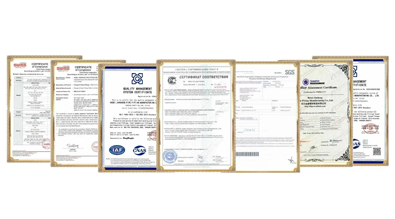
Welcome to RAYOUNG – Strong Pipes, Stronger Promise
